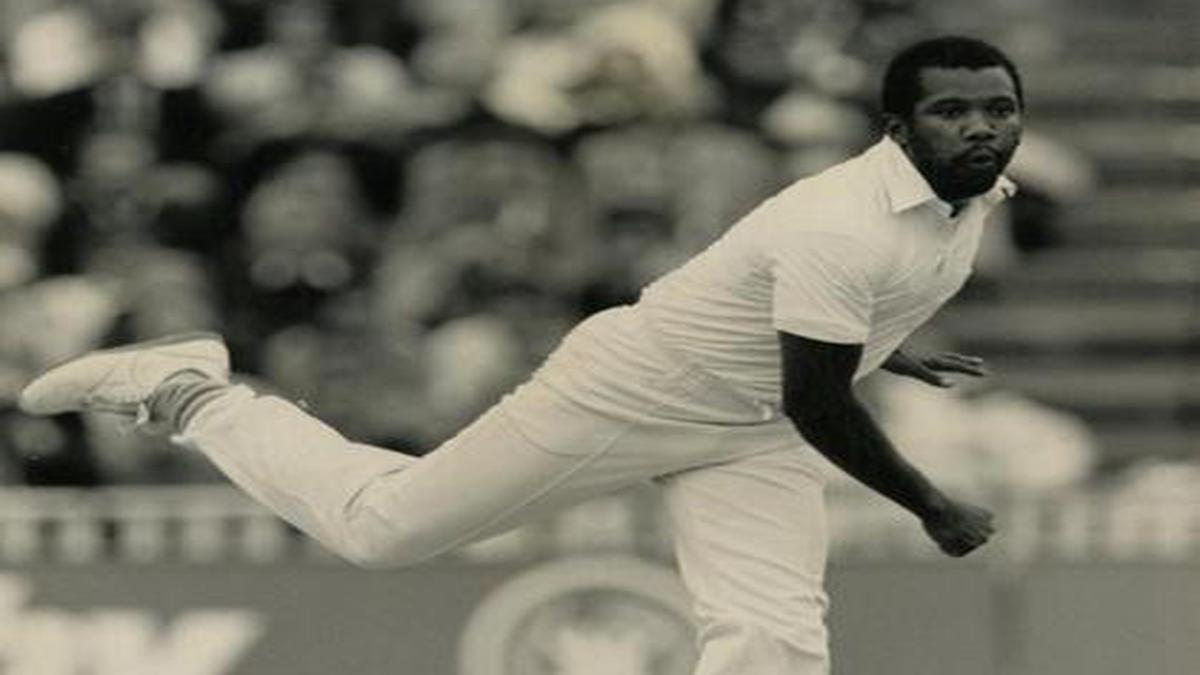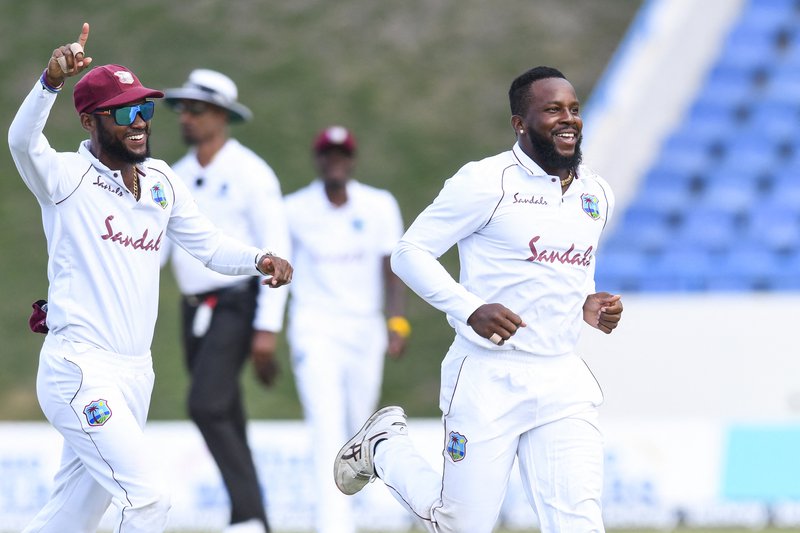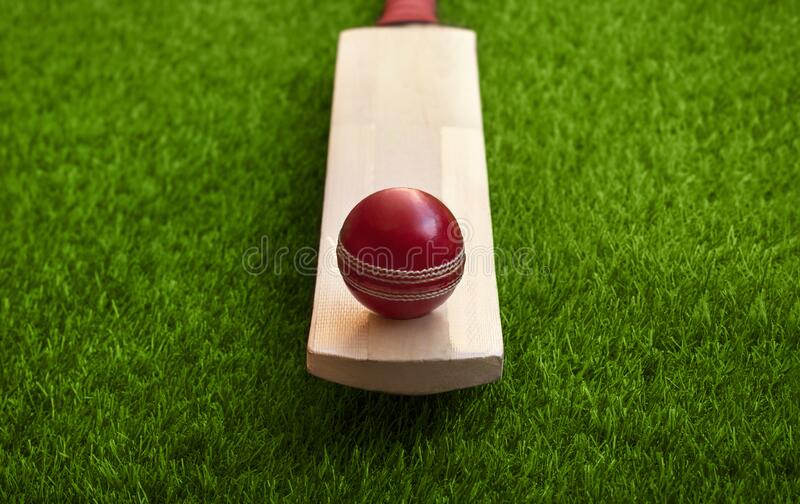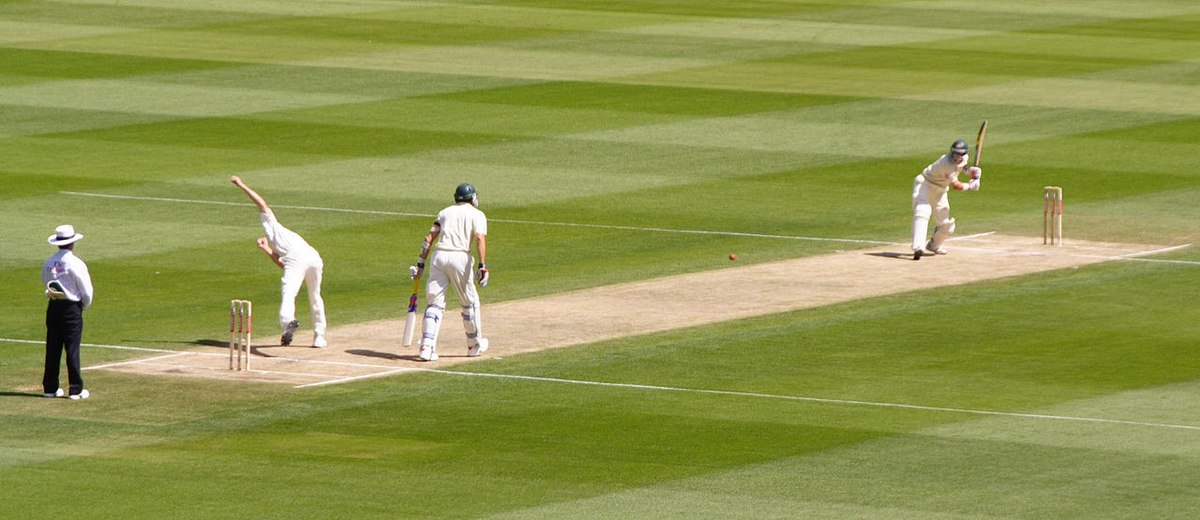Malcolm Marshall. The sheer name used to send shivers down the spine of the batsmen around the world. The famous dialogue in James Bond movies applies perfectly for Marshall. You can hear him say, Marshall, Malcolm Marshall. Impact that he had was tremendous. Marshall had one of the smoothest action for a fast bowler. The rhythmic run-up, quick footsteps and fast arm action, all synchronised emphatically to make the batsman dance to his tune. Any captain would love to have Marshall in his bowling attack. If one were to select the top 5 bowlers ever to have played the game, it would be impossible to look beyond Marshall. Such was the impact that he created. He passed away too soon. This is remembering Malcolm Marshall.
The contemporary batsmen had this to say about Marshall. He had the fastest outswingers which start swinging when you are already committed the shot. Your nose will be in serious danger when he lifted the ball from a perfect good length!..
Even if you go on backfoot, just to see the end of the swing, the ball will come in sharply from pitching on the seam and trap you LBW. I was fortunate to see him many times live and it seemed he would take a wicket in every delivery, even when the batsman just scored a century.
Back in 1976, just after West Indies lost a Test at Port of Spain, India scored 406 in the 4th innings, Lloyd was completely shattered and he immediately disbanded and banished spinners thereby heralding an era of exceptionally quick bowlers. Marshall made his debut just a couple of years later. He proved to be the lynchpin of the West Indian attack. Ofcourse, there were Holding, Garner, Croft and others but the bowling attack revolved around Marshall.
Mark Nicholas about Marshall
The noted English commentator, Mark Nicolas, summed Marshall quite nicely. “He began by bowling sort of awesomely fast with a whippy action. He then developed his skills. Once he had perfected the outswinger, he moved to perfect the inswinger. By about 1984-85, he had about everything — stamina, pace, control, movement, fantastic bowling brain.”
“He was very thoughtful about other people. He was never loud or bombastic.” Mark continues, “he cared about people. He would often say to me if so and so is very quiet, he would tell me ‘have you thought about talking to [that person]’,” Nicholas said.
Marshall retired from the game a bit too soon. He had scalped 376 wickets by then and even in his final series, he took 20 wickets in 5 Tests at 22.10. That is an impressive return by any standards. Just why Marshall stopped suddenly is a mystery. His health deteriorated but that was towards the latter half of 1990s. He was at the pole position to overtake Richard Hadlee and become the highest wicket-taker. Kapil Dev came into prominence only because Marshall retired.
During my childhood
Back in the day, when television was not in vogue as it is now, I knew that the Indian batsmen, who never learned their trade in bouncy pitches, the name Malcolm Marshall used to send shivers. Radio commentary was the only way to understand where and how the game is moving along. I hoped that the short burst of Marshall we pass by without any major damage. I came to expect damage but I always hoped that it will be minimal. Invariably, it will not be but one continued to hope. I knew that it was a futile exercise but hope I did. India was never out of the woods against West Indies with their relentless quicks but if Marshall could be safely played out, it was a little battle won which would give the batsmen some amount of confidence.
Marshall and pace
You could be anyone. Gavaskar, Border, Chappell or Gatting. Yet, you couldn’t score against him. He ensured that the batsmen fight hard to score runs of him. He challenged the batsmen all the time. Pitches did not matter. He could make the ball talk even on the flattest of the surface. Marshall bowled like a man possessed. He collected one Test wicket for every 7.4 overs gathering 376 wickets in 2930 overs. It almost seemed like if he felt bored, he would pick up a wicket. Sort of false sense of security on the part of the batsmen.
Speen gun was not invented when Marshall bowled. We will never know the pace at which he bowled. Just take a look at Mike Gatting’s nose which needed surgeries to set it right. As a batsman, you didn’t know what was the worst about facing Marshall. The ICC brought in the rule of 2 bouncers per over just because of the relentless accuracy of the great West Indian bowlers who used the delivery with aplomb. Marshall, was at the centre of that tactic.
Marshall took a special liking for England. In 1984, To this day, the 7 for 53 is considered one of the grittiest exhibitions of hardcore pace bowling by the Barbadian, which fetched West Indies an unassailable 3-0 lead. Gower, Gatting, Lamb and the rest were all subjected to relentless fast and accurate bowling. He took 127 wickets against England alone. The next series in 1986 was even more brutal for the English. Marshall seemed to have left some unfinished business in 1984 which he took care of in 1986.
Wrapping up remembering Malcolm Marshall
In a game that is dominated by the bat, how people are awed by the beauty of a cover drive and the unflinching hook of a bouncer, Marshall made bowling look equally beautiful.
Other West Indies blogs
https://icricketcritique.com/the-rise-of-the-west-indian-empire/
https://icricketcritique.com/the-fall-of-the-west-indian-empire/



